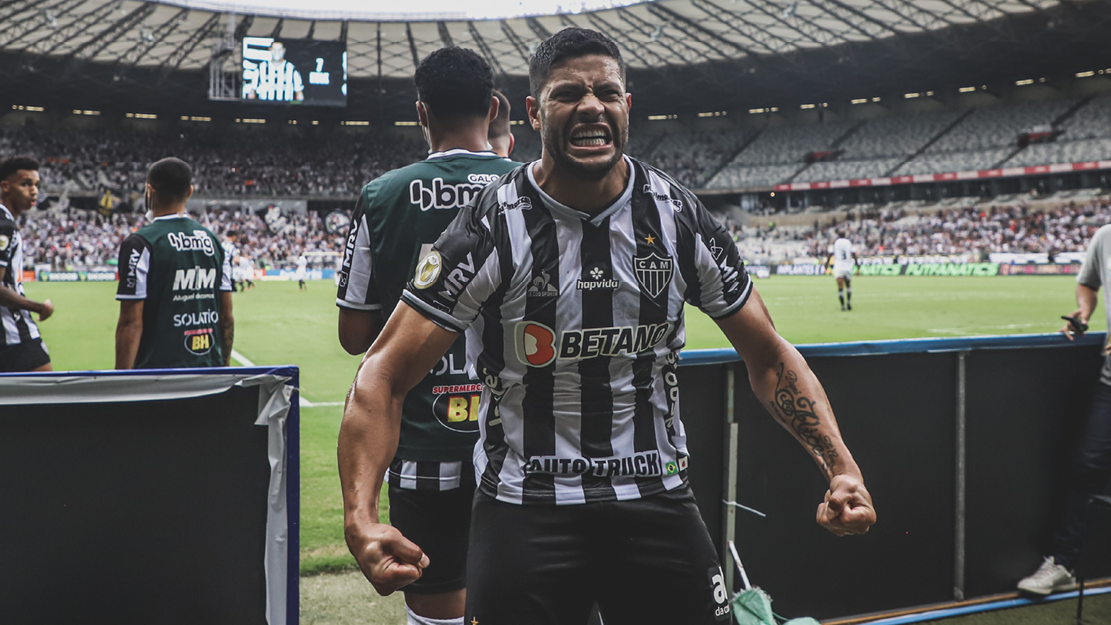Felipe Ribbe de Vasconcellos is Head of Innovation at the Brazilian club Atlético Mineiro. In this extensive interview he speaks about the recent developments at CAM.
This is Part 2 of the interview with Felipe Ribbe. You can find Part 1 here.
As well, you are planning a platform like cameo.com with former players and celebrities, connected to CAM. How concrete are the plans for that? And do you think there is a market for it?
We are in the final stage of development and we plan to launch it in early December. It’s going to be called Galo Ídolos (Galo is rooster in Portuguese and it is our mascot, everyone knows Atlético as Galo in Brazil) and fans will have the possibility of buying virtual experiences with current players, former players and celebrities that are also Atlético fans. Things like birthday videos, video calls, audio messages and so on. I think there’s a big market for it, because people want to feel closer to their idols and have exclusive content to post on social media and show to their friends. It’s also a very nice and different gift to give someone. Imagine getting a happy birthday video from someone who you really admire. And Galo Ídolos is also going to be part of our digital ecosystem, so it’s another point of contact with our fans, something that will help us increase our database and know more about them.
AR is another topic you are already using in your app. Do you earn money with it yet or is it still in the stage of experimenting?
We have a partnership with ImagineAR, a Canadian company, and since last July we have a permanent AR feature on our app. We started with just a fan engagement tool, a really cool one. Fans can take pictures and shoot videos with our players and mascot, the quality is impressive, thanks to the amazing technology that ImagineAR provides, and the great work done by Sportheca, our app developer, to integrate their technology on our application.
We are not generating any revenues yet, because AR is still something new to most Brazilians, even brands. Fans and brands are not used to it, but we wanted to experiment, we wanted to put this technology on their hands so they could test it and we could see how it would go. We like to learn by doing and not by seeing others do. This way we can also gather some numbers of usage in order to show brands how powerful AR can be to reach and interact with fans. Today, brand advertisement usually interrupts fans’ experiences, but with augmented reality brands can create and be part of the experience. Even without monetizing this feature yet, we managed to have very good numbers on our app. The day we released the feature we had a 3000% increase in the number of downloads in comparison with the daily average of the three months before and during the first 30 days after realising the feature, which is called Galo AR, we had a 431% increase in the daily average of downloads.
Do you already have plans to monetize AR?
Yes, definitely. We want to show brands that AR can be a very good way for them to activate sponsorships. With the fan engagement tool that we have today we can do that, but we also think about doing things like scavenger hunts powered by a brand or doing some offline to online initiatives. Imagine that you’re walking in the street and you see a brand logo; you open our app, point your camera to it and you unlock a discount coupon, for example. There are many ways that we can monetize AR, but first we need to educate the market, fans and brands.
With “galo ads” you created a performance marketing offer on your channels. Can you tell me a bit more about it?
Galo Ads is a tool that we created to better monetize our digital properties. Our references are Google Ads and Facebook Ads; of course that we have a long way before we get close to what those companies are doing, but that’s our goal. With Galo Ads we want two things: first, we want to allow brands to be more assertive with their marketing budget, putting their money on the correct target. Second, we want to allow smaller brands to announce with us and talk to our fans. Before Galo Ads, you had to be a big brand with a good budget to be an official sponsor because our properties were expensive. Today, you can be a tiny brand and buy a banner on our weekly newsletter and target just the audience that you want and your budget allows. It’s a tool that we hope will become a very important revenue stream for Atlético. We are increasing our digital ecosystem, creating different digital products to interact with our fans. Therefore we are growing the number of digital properties that we can commercialize and our database, so Galo Ads will become more and more important. In just two months we sold over one million Brazilian Reais (BRL) in ads, something around US$200.000.
Who is that company you build that galo ads platform with?
FanHub, a Brazilian startup.
Finally, the biggest project, the special kit. You sold more than 120.000 shirts in 50 countries in only a few days. Why are the fans so crazy about that shirt?
It’s a campaign called Manto da Massa, which in English would be something like “The People’s Jersey”. We invite our fans to send jersey designs to us; then we select 13 and open a poll, where they can vote on their favorite ones. The jersey with more votes wins and we produce a limited edition of it to sell during a limited period of time. So we are talking about a campaign where fans are the most important part, that’s why it’s a huge success. They want to have their voice heard. And I have to say, this year’s jersey is one of the most beautiful jerseys I’ve ever seen.
What revenue are you generating with this project?
We sold 120.000 jerseys in 10 days, generating 24 million Brazilian Reais (BRL), something around 4 to 5 million dollars.
Atlético Mineiro already did this last year, selling 100.000 shirts. This year, with you in charge, you added another layer to that project, equipping the kit with an NFC tag. What is this for?
We wanted to create something different, so I started to look for possibilities. Juan Iraola, who at the time was CIO of Real Sociedad and now is the Digital Transformation Director at Alavés-Baskonia, is someone that is a reference to me and became a friend, and I knew that he was experimenting with NFC tags on Real Sociedad’s jerseys in order to allow fans to enter the stadium using it as a ticket and to unlock discount coupons. I called him and he presented me the company that they were working with, but I also started to look for other companies that could provide it to us. That’s when I found collectID, from Switzerland.
With the NFC tag we wanted not only to allow fans to verify the authenticity of the jerseys and register their jerseys on their names, but also make the jersey a new communication channel with fans. So we also created a special area within the app where fans have to scan the tag in order to access and will have exclusive content and discount coupons on our official products and with partners. More than a smart jersey, we like to call it a living jersey, because the NFC technology allows us to be always adding new features, content and coupons in the special area, so the jersey that fans started to receive in November will be a different jersey that they will have in April 2022, for example.
Do you already have concrete plans how to use that additional communication channel?
We are closing the first deals to start adding discount coupons, something that will happen in the second half of November. People can already verify authenticity and register their jerseys on their names, they can also see a map and find where there are people with the Manto da Massa. But of course that the most exciting part will be when they can redeem coupons and use the jersey to unlock these benefits.
You also think about working with startups, invest in them or even found startups as a club. Why do you think this makes sense for a football club?
Football clubs have problems like every company from every sector have and therefore need to find solutions for it. Startups can provide those solutions. Usually the vast majority of those problems are shared among other clubs too. On the other hand, sports startups have a really hard time finding their first clients and entering the sports market. If a football club opens its doors it can be very important, because startups can use the club to test and improve their products, making it market fit, and of course earn a quality stamp from that club, which will make it easier for them to close other deals. It’s a win-win situation.
For a club it can be beneficial to have more than a commercial relationship and invest in this startup or to create a new one from scratch, if the solution has the potential to scale and gain market share, which in the future can become an important new revenue stream. We know that clubs in general don’t have the capital to invest, but sometimes they can invest by providing something that can be even better than money, like the things mentioned before, such as POCs and connections.
So to us the idea of creating something like a CVC/venture builder makes total sense and can be a very good opportunity to diversify a football club portfolio. It’s something that we are studying here and that can be a reality in 2022.






